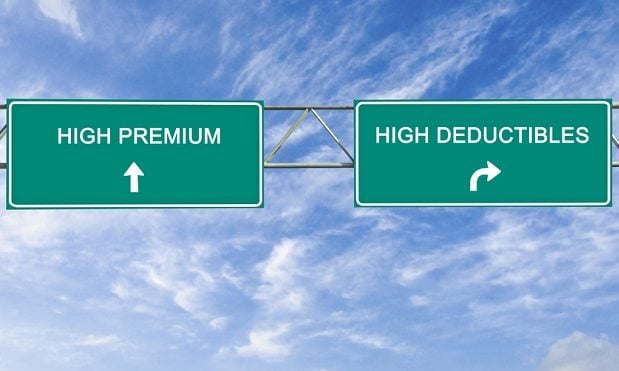
Enrollment in high-deductible health plans, including consumer-directed health plans, among people younger than 65 traditionally has been higher among those with directly purchased plans than those with employment-based coverage. However, this may be changing, according to National Health Statistics Reports.
“This report found that from 2021 through 2023, enrollment in HDHPs did not differ significantly between employment-based and directly purchased coverage,” the report said. “Generally, white non-Hispanic people were the most likely to be enrolled in an HDHP. Black non-Hispanic and Hispanic people were the least likely to be enrolled in an HDHP. Enrollment in an HDHP increased with family income and family educational attainment.”
Recommended For You
People with HDHPs pay lower monthly insurance premiums by paying more out-of-pocket for medical expenses until their minimum deductible is met. An HDHP may be used with or without a health savings account. Plans with an associated HSA or health reimbursement agreement are also known as consumer-directed or consumer-driven health plans. Enrollment in HDHPs has grown since the enactment of the Medicare Prescription Drug, Improvement and Modernization Act of 2003, which established HSAs.
Previous studies found that enrollment in HDHPs was higher among those with directly purchased private coverage than those with employment-based coverage. However, the HDHP enrollment gap between employment-based and directly purchased coverage had diminished considerably by 2018. More recently, according to studies conducted by the Employee Benefit Research Institute, overall enrollment in HDHPs has declined since 2020.
In 2023, most businesses that provided health benefits offered only one type of health plan, with about two-thirds of covered workers employed by a firm that offered one or more HDHPs. For people with employment-based coverage, HDHPs have the effect of shifting costs from the employer to the person seeking care.
A growing number of people enrolled in HDHPs also are enrolled in a CDHP, with the percentage increasing from more than 30% in 2010 to nearly 45% in 2018. Similar increases in CDHP enrollment were observed in the Consumer Engagement and Health Care Survey. Enrollment in a CDHP may help offset some of the upfront financial burdens of HDHPs with the use of their associated HSA or HRA that help pay for health care until the deductible is met.
HDHP and CDHP enrollment increased with increasing family income and family education. Previous research found that those with higher incomes are more likely to contribute to HSAs. However, HDHP enrollees still may be more sensitive to health care costs, because they are responsible for paying the full amount of qualified expenses until their deductible is met, potentially leading to a reduction in unnecessary medical care.
Additionally, HDHP enrollees have been shown to have fewer outpatient and primary care visits, lower preventive services use, out-of-pocket spending and emergency department use.
© 2025 ALM Global, LLC, All Rights Reserved. Request academic re-use from www.copyright.com. All other uses, submit a request to [email protected]. For more information visit Asset & Logo Licensing.








